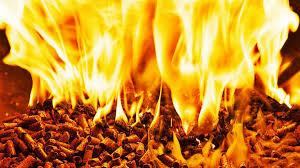Pellet Prices are falling but will not return to their pre-crisis level
“A complicated but exceptional year. » Éric Vial, the general delegate of Propellet, the association bringing together the wood pellet sector, has not been about to forget in recent months. “We had to deal with consumer panics, half of whom bought more than expected and earlier in the year, for fear of running out and to avoid price increases, which unbalanced the market and created a feeling of scarcity, he explains. Today, 1.7 million homes are heated with wood pellets.
Prices are falling but will not return to their pre-crisis level
To hear the professionals, everything is gradually getting back in order. There are no more supply problems and prices are starting to come down. After having tripled, to go up to €15 per 15 kg bag of pellets, they should approach €6 in the coming weeks, once the distributors have sold off their very expensive purchased stocks.
“However, it is not certain that they will return to their pre-crisis level, around €4 to €5, because production costs have increased”, believes Aymeric de Galembert, president of Seguin Duteriez, a stove manufacturer, who co-chairs the domestic wood heating commission of the Renewable Energies Syndicate (SER). In particular, the soaring prices of gas and electricity, which are necessary to transform sawdust into pellets, but also plastic for bagging and fuel for transporting them by truck.
Renewable and local energy
However, the sector believes that it remains very competitive compared to other energy sources. Heating with wood pellets would be half the cost of electricity and fuel oil, and 5 to 10% less expensive than heat pumps, according to Propellet’s calculations.
« It is a renewable and local energy, 85% produced in France. We do not cut trees to make pellets but only use by-products from the wood industry », emphasizes Éric Vial. Half of the imports come from Belgium, Germany and Spain, he adds. The rest comes from Austria, Portugal, the Baltic countries and, occasionally, from Russia.
Market growth continues
Rising prices barely slowed market growth last year, with 15% more homes heating with pellets. Sales of pellet boilers rose by 20%, those of stoves by 16%. In total, the number of households using wood pellets has multiplied by 28 in fifteen years, and the industry believes that it still has significant development potential, with, for example, the replacement of 3 million oil-fired boilers.
Faced with pellet consumption which has increased by 80% in five years, to reach 2.5 million tonnes in 2022, supply has only increased by 50% during the same period. It was therefore struggling to keep up, with an almost constant level of production throughout the year, which led to the overheating of recent months.
New factories commissioned
But new capabilities are coming to market. Three factories started up last year, representing an additional 250,000 tonnes, bringing the number of installations in the territory to 70. This year, three new units will enter service. Between 2021 and 2028, production is expected to double, according to Propellet forecasts. “At the same time, consumption per household should decrease, with better insulated homes and improved efficiency of installations », Estimates Frédéric Coirier, CEO of Poujoulat, one of the leading pellet manufacturers in France, under the Crepito and Woodstock brands.
More and more sawmills are also getting into the production of pellets, a way for them to make their business more profitable by recovering their waste. Agricultural cooperatives are interested in this market. They have the advantage of owning the equipment, with the machines that produce animal feed in the form of pellets.

